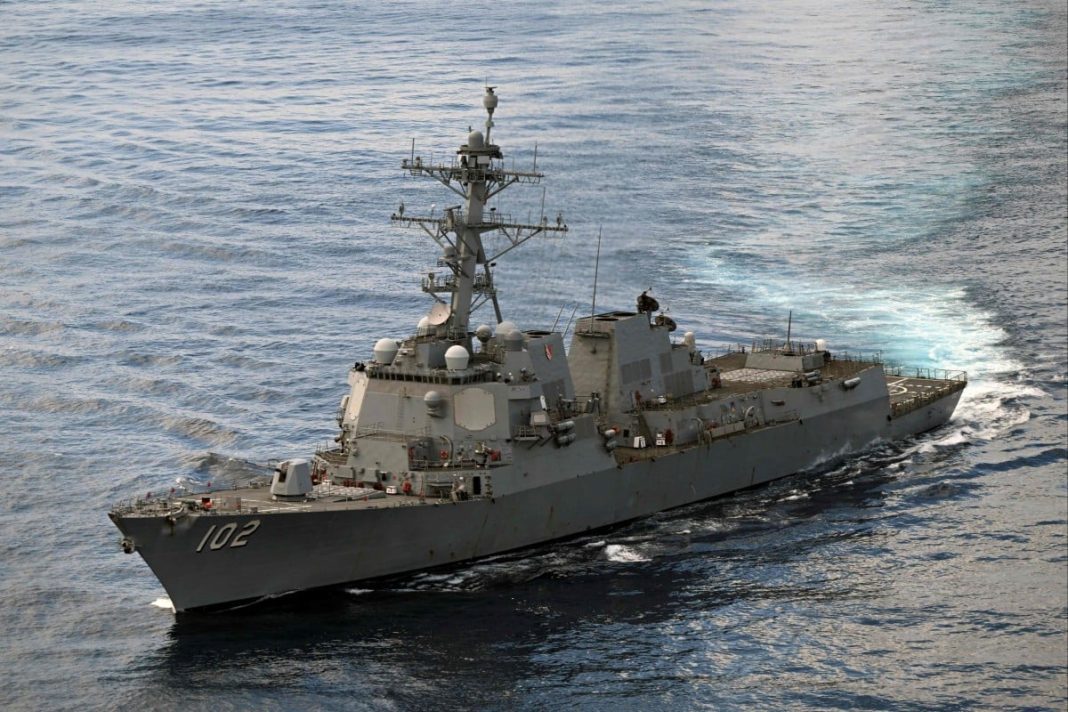Tensions in the Caribbean rose sharply as American warships moved close to the coast of Venezuela, drawing global attention. The naval force included three destroyers and an amphibious squadron carrying around 4,000 Marines.
Rising Tensions in the Caribbean
US officials stated that the mission was aimed at targeting drug cartels in the region. However, Venezuelan authorities and their allies described the build-up as a direct threat to the nation’s sovereignty rather than a law enforcement operation.
In a swift response, Venezuela announced the mobilization of about 4.5 million militia members across the country. Drone flights were suspended nationwide for 30 days, with officials stressing the importance of protecting national skies, seas, and borders. Military leaders described the patrols as an invasion threat, claiming that such actions violated the right to self-defense and independence.
US sends 4,000 troops and warships to southern Caribbean to target Venezuela cartels
The United States also intensified its pressure campaign with tough rhetoric. It labelled Venezuela’s government a narcoterrorist cartel and raised the financial reward for capturing its top leadership. The combination of military deployment and political language heightened the sense of confrontation, placing the entire Caribbean region on edge.
China’s Firm Position on the Caribbean Standoff
China issued a strong warning against the American military build-up in the Caribbean. A spokesperson from its foreign ministry stated that any action undermining the principles of the United Nations Charter, particularly sovereignty and national security, was unacceptable. The message was clear: external interference in Venezuela’s internal matters would not be tolerated.
Beijing also urged the United States to focus on steps that would promote peace and stability in Latin America and the Caribbean rather than add to instability. This call for restraint came at a moment when tensions in the waters were drawing increasing criticism from governments across the region.
Officials in Caracas held meetings with China’s ambassador to discuss joint projects and strengthen existing partnerships. Authorities highlighted progress in cooperative programs, pointing to them as signs of a reliable relationship. These meetings also underlined the strategic importance of China’s role in Venezuela’s survival under international sanctions.
China’s involvement goes beyond words. Since 2007, the country has invested around US$67 billion in Venezuela, making it the largest South American recipient of Chinese funding. Much of this investment was linked to oil supplies, allowing Beijing to secure energy resources while Venezuela accessed vital financial aid. Even after disputes over repayment and pressure from sanctions, the alliance remained intact, with China continuing to provide diplomatic backing in global forums.
Divided Regional Response
The deployment of American warships in the Caribbean sparked mixed reactions among regional governments. Several countries voiced concern, warning that unilateral military actions could destabilize an already fragile region. Officials in Mexico, Colombia, and Brazil repeated their commitment to dialogue and non-intervention as guiding principles. They argued that organized crime and smuggling issues should be addressed through international cooperation rather than unilateral shows of force.
Human Bargains: 252 Migrants at Center of Venezuela–El Salvador Diplomatic Showdown
Other nations, however, either remained quiet or supported Washington’s approach. Argentina, aligning itself more closely with the United States, shared defense cooperation messages without issuing its own formal statement. Ecuador responded differently by ordering its intelligence services to investigate suspected links between Venezuelan cartels and local gangs. Paraguay went even further, with its Senate officially declaring a Venezuelan-linked cartel a terrorist organization, a move awaiting presidential approval.
This division highlighted the fractured political landscape of Latin America and the Caribbean. While some governments defended sovereignty and opposed external intervention, others preferred to stand alongside Washington’s military and security agenda. The contrasting reactions showed how the American naval presence had consequences far beyond Venezuelan borders, sparking fresh debates across the Caribbean and the wider region.

